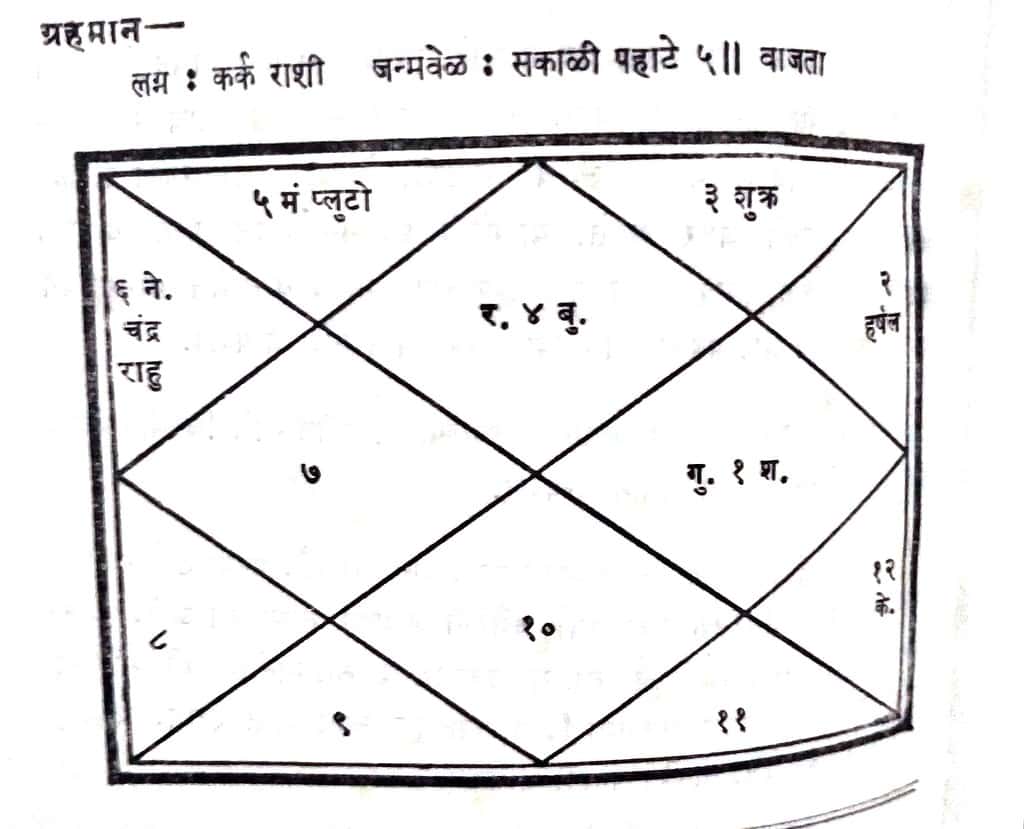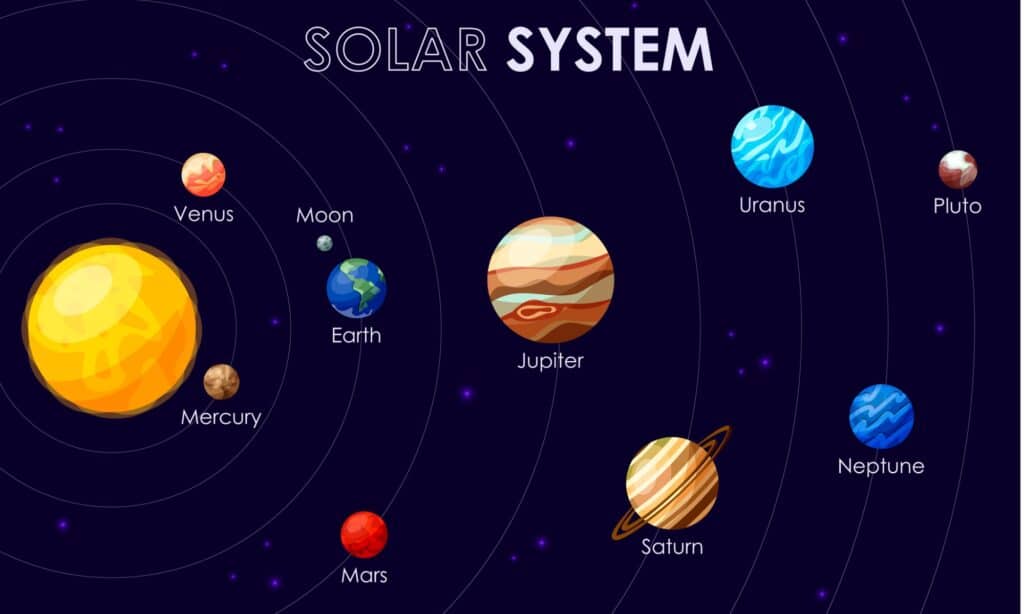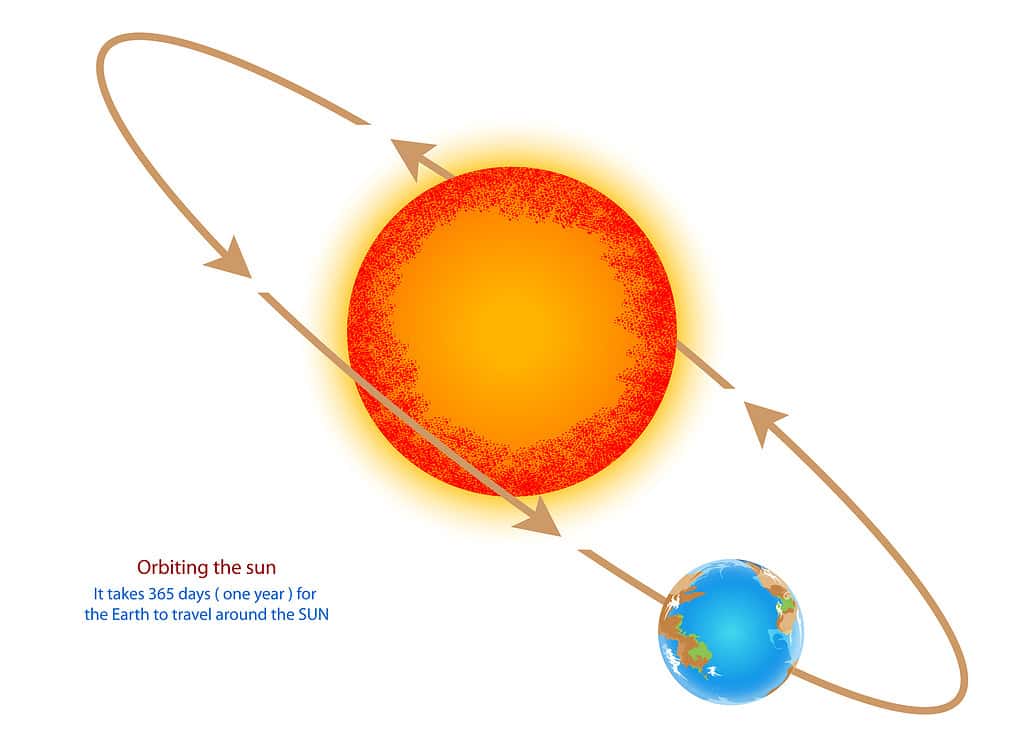Both Western and Vedic astrology look at how the planets may affect our personalities and life paths. They have many similarities. The planets have similar meanings, and they even use the same signs and houses. In some ways, the differences between the two are subtle, but in other ways they are huge.
Both Vedic and Western astrology track planets and points in the sky as they move through the 12 zodiac constellations. Their placement at any given time has a specific meaning. Each planet represents certain qualities, and each sign has specific characteristics. The planets and signs fall into different houses, the latter of which represent different areas of life.
What is Western Astrology?

This is what astrology charts look like in Western astrology.
©Lidiia Moor/iStock via Getty Images
Western astrology is popular in “the West”—The Americas and Europe. This type of astrology uses the tropical zodiac system. This system was developed more than 2,000 years ago and has the signs fixed to certain calendar points. No matter what, Aries, the first sign of the zodiac, always starts on the spring equinox in March each year.
What is Vedic Astrology

This is an example of a Vedic astrology chart.
©HrishikeshBrahmarudra, CC BY-SA 4.0 – License
Vedic astrology is also called Jyotish Shastra. Jyotish means “the science of light” and Shastra means “rules” or “manual” in Sanskrit. Other names for Vedic astrology include Hindu astrology and Indian astrology. It originated in India and came from the Vedas, ancient scriptures in Hinduism. These works are around 3,000 years old. Because of the similarities with Western astrology in terms of planets and signs, historians believe Vedic astrology may have influences from Hellenistic astrology. But it also has its own important origins.
Vedic astrology uses the sidereal calendar. It is based on how the constellations and planets actually appear in the sky. Around 2,000 years ago, both sidereal/Vedic and tropical/Western astrology were aligned. However, due to the Earth’s “wobble,” the ecliptic plane of our planet shifts by 1° every 72 years, slightly changing how the planets appear in the constellations.
Over the years, with these changes, Vedic and Western astrology have diverged. The two are now about 24° apart, which means that in Western astrology, the start of each sign is 24° off from the start of each sign in Vedic astrology. Some people believe Vedic astrology is more accurate because it represents what is actually in the sky. If your Western astrology chart doesn’t resonate with you, try your Vedic one. You might it feels more authentic.
Important Differences Between Western and Vedic Astrology
Sun Sign vs. Rising Sign
Both the Sun sign and the Rising sign represent the same things in Western and Vedic astrology. However, they are valued differently between the two systems. In Western astrology, when people say “I’m a Capricorn,” they are usually talking about their Sun sign, i.e., the position of the Sun when they were born. In Vedic astrology, the Rising sign is the most important aspect. So, when people who use Vedic astrology say, “I’m a Leo,” they are probably referring to their Rising sign.
The Sun represents the overall ego, personality, and life direction. The Rising sign (also called the ascendant) represents how that person appears to other people and the face they put towards the world.
Different Names
With language differences, it only makes sense that Vedic astrology would have different names for the planets and signs. In general, these have the same significance between the two disciplines, and the names often have a similar meaning.
Astrological Sign Names in Western & Vedic Astrology
| Western Sign | Western Sign Name Meaning | Vedic Sign Name | Vedic Sign Name Meaning |
|---|---|---|---|
| Aries | Ram | Mesha | Ram |
| Taurus | Bull | Vrishabha | Bull |
| Gemini | Twins | Mithun | Pair or Couple |
| Cancer | Crab | Karka | Crab |
| Leo | Lion | Simha | Lion |
| Virgo | Virgin or Maiden | Kanya | Daughter or Unmarried Girl |
| Libra | Scales | Tula | Balance |
| Scorpio | Scorpion | Vrishchika | Scorpion |
| Sagittarius | The Archer | Dhanus | Bow (as in Bow & Arrow) |
| Capricorn | Sea-Goat | Makara | Sea-Animal or Crocodile |
| Aquarius | Water Bearer | Kumbha | Pitcher |
| Pisces | Fishes | Meena | Fish |
Astrological Planet Names in Western & Vedic Astrology

The planets have different names in Western astrology and Vedic astrology.
©iStock.com/Alexander Timoshin
In Western astrology, the planets typically have the same name between the metaphysical discipline of astrology and the scientific discipline of astronomy. This is also largely true for Vedic astrology. In that study, the names of the planets are generally the same as the ones used in the language, Hindi.
In both traditional Western astrology and Vedic astrology, the more recently discovered outer planets do not have a strong significance. Vedic astrologers primarily use only things that they can see in the sky. However, people use them more heavily in modern Western astrology.
| Western Planet Name | Vedic Planet Name |
|---|---|
| Sun | Surya |
| Moon | Chandra |
| Mercury | Budha |
| Venus | Shukra |
| Mars | Mangala |
| Jupiter | Brhaspati |
| Saturn | Shani |
| Uranus | Harshal or Prajapati |
| Neptune | Varun |
| Puto | Yam or Yama |
Astrological Names of Other Bodies and Points in Western & Vedic Astrology
| Western Name | Vedic Name |
|---|---|
| North Node | Rahu |
| South Node | Ketu |
| Ascendant | Udaya Lagna |
The Elements of the Signs in Western and Vedic Astrology
In Western astrology, one of four elements is associated with each sign. There are 3 signs for each element: fire, earth, air, and water.
In Vedic astrology, there are five elements. However, the fifth element, ether, rules over Jupiter. All the signs have the same elemental association.
Additionally, in Western astrology, some planets do have associations with elements but are not ruled by them. In Vedic astrology, the planets do have elemental rulers.
| Western Element Name | Vedic Element Name | Signs It Rules in Both Western & Vedic Astrology | Planets it Rules in Vedic Astrology |
|---|---|---|---|
| Fire | Agni | Aries, Leo, Sagittarius | Sun, Mars, South Node |
| Earth | Prithvi or Bhumi | Taurus, Virgo, Capricorn | Mercury |
| Air | Vayu | Gemini, Libra, Aquarius | Saturn, North Node |
| Water | Apas, Jala, or Varuna | Cancer, Scorpio, Pisces | Moon, Venus |
| Space or Ether (Not used in Western Astrology) | Akasha or Dyaus | None | Jupiter |
Chart Differences in Western and Vedic Astrology

Vedic astrology charts are square, not round like Western astrology charts.
©microgen/iStock via Getty Images
The actual charts look quite a bit different between Western and Vedic astrology. The Western astrology chart is within a 360° circle. The planets and signs are laid out within the circle.
Vedic astrology charts are laid out on a square. There are a few different house formats, but in general, the houses are squares, diamonds, or triangles within the larger square. The houses between Western and Vedic astrology have very similar meaning. But their layout looks very different on the chart.
Nakshatras

The ecliptic plane is an imaginary plane that represents the Earth’s orbit.
©mapichai/iStock via Getty Images
Before the influence of Hellenistic astrology came into play, Vedic astrology had its own “house system” called Nakshatras. These are lunar stations or mansions. They represent the ecliptic plane of the Earth divided into 27 (sometimes 28) segments. The ecliptic plane is an invisible representation of the plane of the Earth’s orbit around the sun.
Each Nakshatra name comes from a constellation within that section of sky. Each Nakshatra represents different areas of life. Your birth time within the Nakshatras gives you even more information about your life and potential.
Similar to how the 12 astrology signs have three modalities, cardinal, fixed, and mutable, the Nakshatras have seven qualities. People who believe in Nakshatra astrology also give their children names with specific sounds that correspond to which Nakshatra they were born under.
The Nakshatras in Vedic Astrology
| Nakshatra Name | Name Meaning | Corresponding Stars/Constellation | Nakshatra Quality | Quality Meaning | Ruling Planet | Name Syllables | Ruling God |
|---|---|---|---|---|---|---|---|
| Ashvini/Ashwini | Harnessing Horses | Sheraton & Gamma in Aries | Laghu/Kshipra | Swift | Ketu (South Node) | Chu, Che, Cho, La | Ashwini Kumaras |
| Bharani | The Bearer | Stars 35, 41, & Lilli Borea in Aries | Ugra/Krura | Active | Yama (Pluto) | Li, Lu, Le, Lo | Yama/Kali |
| Krittka | The Cutters | The Pleiades | Misra | Mixed | Surya (Sun) | A, E, U, I, | Agni |
| Rohini | The Red One | Aldebaran | Shthira | Fixed | Chandra (Moon) | O, Va, Vi, Vo | Brahma |
| Mrigrashirsha | Deer Head | Meissa & Phi in Orion | Mridu | Tender | Mangala (Mars) | Ve, Vo, Ka, Ke | Soma |
| Ardra | The Moist One | Betelgeuse | Tikshna | Sharp | Rahu (North Node) | Ku, Ga, Ng, Cha | Rudra |
| Punarvasu | Renewal | Castor & Pollux in Gemini | Chara | Movable | Brhaspati (Jupiter) | Ke, Ko, Ha, Hi | Aditi |
| Pushya/Tishya | To Look | Gamma, Delta, & Theta of Cancer | Laghu/Kshipra | Swift | Shani (Saturn) | Hu, He, Ho, Da | Brihaspati |
| Ashlesha | The Embrace | Delta, Epsilon, Eta, Rho, & Sigma in Hydrae | Tikshna | Sharp | Budha (Mercury) | Di, Du, De, Do | The Nagas |
| Magha | The Bountiful | Regulus | Ugra/Krura | Active | Ketu (South Node) | Ma, Mi, Mu, Me | Pitris |
| Purva Phalguni | The First Reddish One | Delta & Theta in Leo | Ugra/Krura | Active | Shukra (Venus) | Mo, Ta, Ti, Tu | Bhaga |
| Uttara Phalguni | The Second Reddish One | Denebola | Shthira | Fixed | Surya (Sun) | Te, To, Pa, Pi | Bhaga Aditya |
| Hasta | The Hand | Alchiba, Kraz, Gienah, Algorab, & Minkar in Corvus | Laghu/Kshipra | Swift | Chandra (Moon) | Pu, Sha, Na, Tha | Savitar |
| Chitra | Bright One | Spica | Mridu | Tender | Mangala (Mars) | Pe, Po, Ra, Ri | Vishwakarma |
| Svati/Swati | Very Good | Arcturus | Chara | Moveable | Rahu (North Node) | Ru, Re, Ra, Ta | Vayu |
| Visakha | With Branches | Alpha, Gamma, Iota, & Zubeneschamali in Libra | Misra | Mixed | Brhaspati (Jupiter) | Ti, Tu, Te, To | Indragni |
| Anuradha | Following Radha | Acrab, Dshuuba, & Pi in Scorpio | Mridu | Tender | Shani (Saturn) | Na, Ni, Nu, Ne | Mitra |
| Jyestha | The Eldest | Antares, Paikauhale, & Sigma in Scorpio | Tikshna | Sharp | Budha (Mercury) | No, Ya, Yi, Yu | Indra |
| Mula | Root | Larawag, Shaula, Zeta, Eta, Theta, Iota, Kappa, Lambda, Mu, & Nu in Scorpio | Tikshna | Sharp | Ketu (South Node) | Ye, Yo, Ba, Bi | Niriti |
| Purva Asadha | First Invincible One | Kaus Media & Kaus Australis in Sagittarius | Ugra/Krura | Active | Shukra (Venus) | Bu, Dha, Bha | Apas |
| Uttara Asadha | Second Invincible One | Nunka & Zeta in Sagittarius | Shthira | Fixed | Surya (Sun) | Be, Bo, Jha, Jhi | Vishva Devas |
| Abhijit (no longer used) | The Victorious One | Vega & Sigma in Lyra | Budha (Mercury) | Brahma | |||
| Sravana | Hearing | Altair, Tarazed, & Beta in Aquila | Chara | Movable | Chandra (Moon) | Ju, Je, Gho, Gha | Parvati (Women)/Vishnu (Men) |
| Dhanistha | Most Famous | Alpha, Beta, Gamma, & Delta in the Delphinus | Chara | Movable | Mangala (Mars) | Ga, Gi, Gu, Ge | Ashta Vasus |
| Satabhisa | 100 Doctors | Sadachbia | Chara | Movable | Rahu (North Node) | Go, Sa, Si, Su | Varuna |
| Purva Badrhapada | First of the Blessed Feet | Markab & Scheat in the Pegasus | Ugra/Krura | Active | Brhaspati (Jupiter) | Se, So, Da, Di | Aja Ikpada |
| Uttara Badrhapada | Second of the Blessed Feet | Algenib in Pegasus & Alpheratz in Andromeda | Sthira | Fixed | Shani (Saturn) | Du, Tha, Jna, Da | Ahir Budhanya |
| Revati | Prosperous | Zeta in Pisces | Mridu | Tender | Budha (Mercury) | Je, Do, Cha, Chi | Lord Vishnu |
The photo featured at the top of this post is © microgen/iStock via Getty Images
Thank you for reading! Have some feedback for us? Contact the AZ Animals editorial team.






